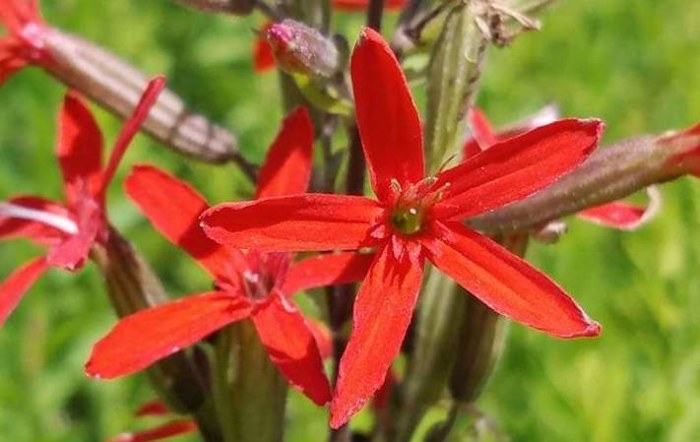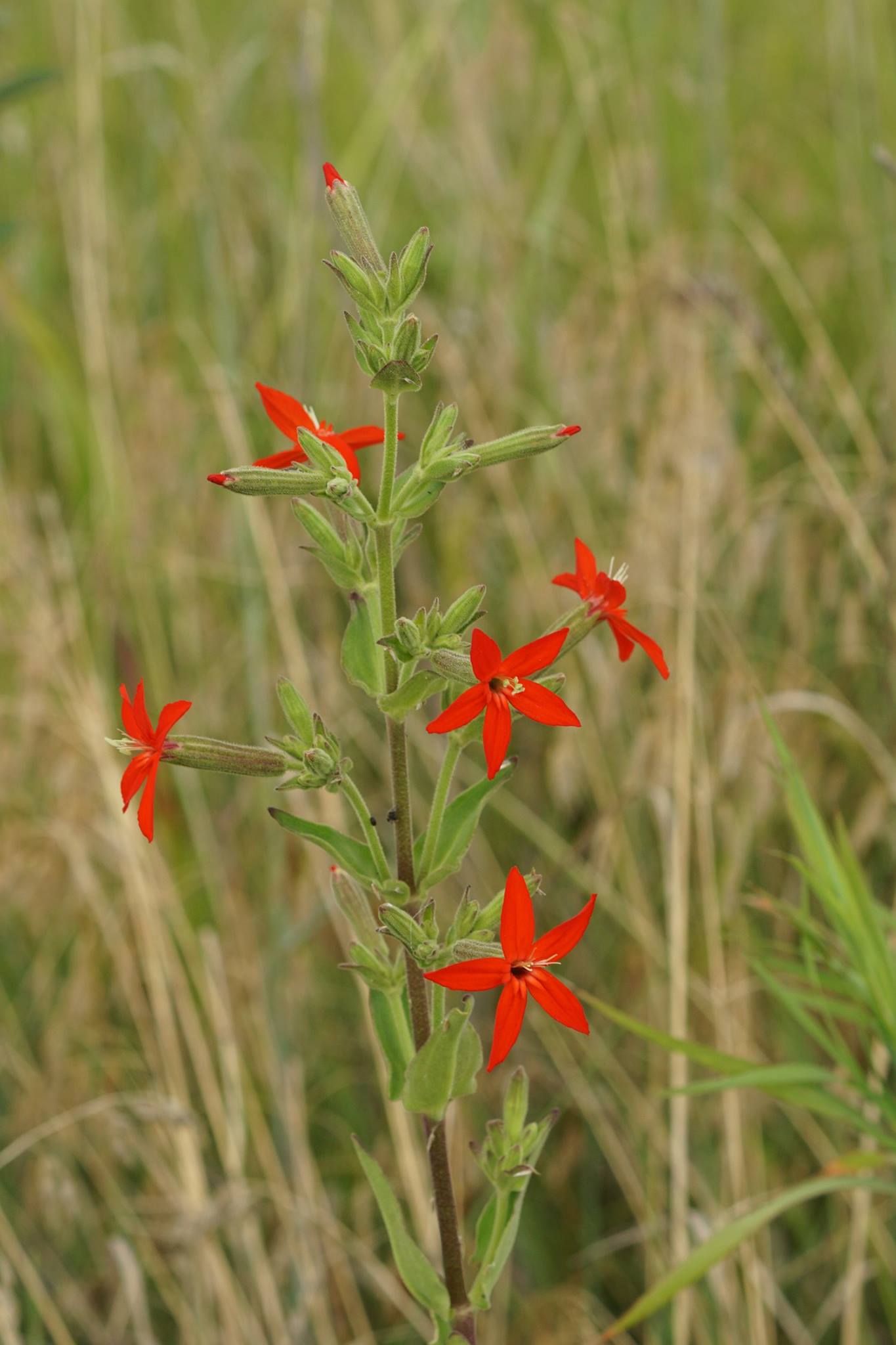Today’s featured flower doesn’t exactly belong in Iowa. But unlike most of the non-natives Bleeding Heartland has profiled for this series, it isn’t a European transplant. Although royal catchfly (Silene regia) is native to states south and east of us, it became popular in prairie plantings or restorations here because of its brilliant color. You are are unlikely to overlook these bright red, star-shaped flowers or confuse them with anything else blooming on an Iowa landscape during the summer.
Over the years, I’ve tried and mostly failed to take good pictures of red or deep pink flowers. The petals often come out looking flat, like a Matisse painting. I’ve learned that this is a common problem for amateur photographers. Fortunately, several wildflower enthusiasts stepped up to share their images of royal catchfly from different parts of the state.
When photographing red flowers, some advise deliberately underexposing to capture detail. I stumbled on that approach for this picture, taken in one of the plantings in the southeast parking lot at Gray’s Lake in Des Moines.
The Prairie Moon Nursery website says the common name for this plant “comes from the fact that insects are often stuck all over the stems.” It is “relatively easy to grow” and typically blooms between June and August.
Wendie Schneider found these royal catchfly plants on a Story County prairie in July 2016.
The plants with yellow flowers in this shot are partridge pea.
The large flower on the left is purple coneflower, which also wasn’t native to most Iowa tallgrass prairies. (In contrast, pale purple coneflower was prevalent.)
Katie Byerly shared pictures she took in July 2017 at the Nelson Paradise Wildlife area near Otranto (Mitchell County). She told me, “I went back several times this summer to look for them again,” but for some reason the county kept mowing that prairie this year.
According to the Illinois Wildflowers website,
Red is an uncommon color among prairie plants because many pollinating insects (e.g., bees) are insensitive to this range of the light spectrum. However, some butterflies perceive red, and for this reason are attracted to such flowers. The flowers of Royal Catchfly have a design that favors butterflies as pollinating agents: They have a proboscis that is sufficiently long to reach the nectar at the bottom of the long narrow tube that is formed by the calyx, while the flared petals provide a colorful landing platform for their legs.
Iowa naturalist Eileen Miller told me, “I have these growing in my yard, although they are not native to our area. But I love the color and the fact that they attract sphinx moths and hummingbirds. So much fun to watch.” Eileen shared these pictures:
One last shot of royal catchfly, courtesy of Kathleen Unger, who found this plant growing near a pond in Johnson County in July 2018. That’s more partridge pea near the bottom of the frame.















